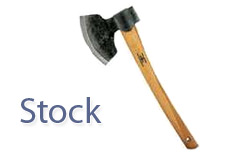What is a Reverse Stock Split? And Why Is It Usually a Bad Thing For the Stock?
 If you are currently holding shares of a company and they have just recently announced plans to institute a reverse split of their stock, then you probably want to seriously evaluate whether or not you will continue to hold that stock. A reverse stock split is a flashing red light and is normally a last ditch effort to try and prolong the life of a dying stock.
If you are currently holding shares of a company and they have just recently announced plans to institute a reverse split of their stock, then you probably want to seriously evaluate whether or not you will continue to hold that stock. A reverse stock split is a flashing red light and is normally a last ditch effort to try and prolong the life of a dying stock.In most cases a company will institute a reverse split in order to maintain their listing on a stock exchange. For instance, in order for a stock to maintain its listing on the Nasdaq stock exchange, it must maintain a $1.00 per share minimum bid price requirement for a certain number of days. If the stock falls below the $1.00 threshold (I believe they take the average closing price for a 30 day period and average it out, but don't quote me on that) then the Nasdaq will send a notice to the company, warning of a possible delisting. A delisting is bad news for a company as it will mean a possible move to the pink sheets, which results in a loss of stature and a move into obscurity.
So in order to maintain this requirement, companies will often institute a reverse share split in order to increase the price of their stock. So, let's say that a company is trading at 50 cents per share and is in danger of losing their listing on the Nasdaq. They have the option of a reverse share split (and most will take this option) in order to raise the share price. So, let's say in this case, the company institutes a 1:5 reverse split. Suddenly there are 20% the shares outstanding that there were before, but the share price is 5 times higher. So suddenly the share price will be $2.50, and the Nasdaq will send the company a letter, telling them that they have regained compliance.
The question that you have to ask yourself is - why is this company trading for pennies in the first place? Surely this can't be a good sign. You know what, it hardly ever is. I read that stat recently that said that over 75% of stocks that institute a reverse split will end up trading lower. This stat sounds about right to me, based on my experience. Companies that institute reverse splits are normally dying on the vine and are about to be buried. It's like hooking up a brain-dead patient to a heart machine - you are normally just prolonging the life of the patient who has no chance of survival.
Sure, you can probably point me to a company that instituted a reverse split in order to maintain their listing and ended up flourishing. However, I could point you to a 100 more that are trading significantly below their reverse split levels. Trust me, it is usually not a good thing. The company usually have some major problems, and the stock is usually irreparably harmed.
If you are long and a company that you own has declared a reverse stock split, watch out. Ask yourself why you are in the stock and if any of the fundamental reasons for you holding the stock have changed. Don't just hold because you don't want to take a loss.
Filed under: Stock Market Education | General Knowledge



